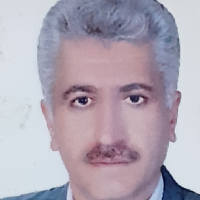Designing and validating the curriculum model of media literacy education in the primary course
Given the rapid advances in digital technologies and the simultaneous increase in the use of new media among children, it can be said that the methods of acquiring knowledge are much different from what previous generations experienced. In this age, the importance and effectiveness of the media in relation to the teacher and the educational system are undeniable. Considering the understanding of this necessity based on the extent of the dimensions and the impact of different media on children and adolescents, the present study was conducted with the aim of designing and validating the model of media literacy education course for elementary school.
The research approach is a mixed type (qualitative and quantitative). The synthesis method has been used to compile the model. It has been surveyed by 20 experts to validate it. To conduct research synthesis, 422 cases of research conducted in the period 2012 to 2020 in the field of media literacy curriculum were identified with specific keywords in domestic scientific databases. Among these studies, after several screening stages, based on the study title, abstract and content of the research, 16 study units were eligible to enter the research, respectively. The selected study units were analyzed by content analysis and categorized. The CVR coefficient was used to validate them.
The findings showed that the objectives of the media literacy curriculum should be based on maintaining and strengthening the socio-political system as well as the Iranian-Islamic lifestyle while paying attention to the indicators of media literacy; In compiling content, one should pay attention to media communication concepts and components of critical thinking, critical and cognitive media literacy theories; Also, in teaching-learning methods, it is necessary to use active methods according to the characteristics of the central student and the facilitating role of the teacher based on dialogue and research community; In evaluation methods, it is necessary to use a variety of tests, with emphasis on parenting and metacognitive self-evaluation.
The results led to the identification of the characteristics of media literacy curriculum elements as a pattern in which, instead of adapting to a linear and predetermined pattern, emphasis is placed on exploring, sharing, and metacognitively evaluating students' media experiences. The model can be used by primary school teachers and curriculum planners according to the aggregation of the findings of previous research as well as the validation of the extracted features by experts in the field of media literacy education
- حق عضویت دریافتی صرف حمایت از نشریات عضو و نگهداری، تکمیل و توسعه مگیران میشود.
- پرداخت حق اشتراک و دانلود مقالات اجازه بازنشر آن در سایر رسانههای چاپی و دیجیتال را به کاربر نمیدهد.




